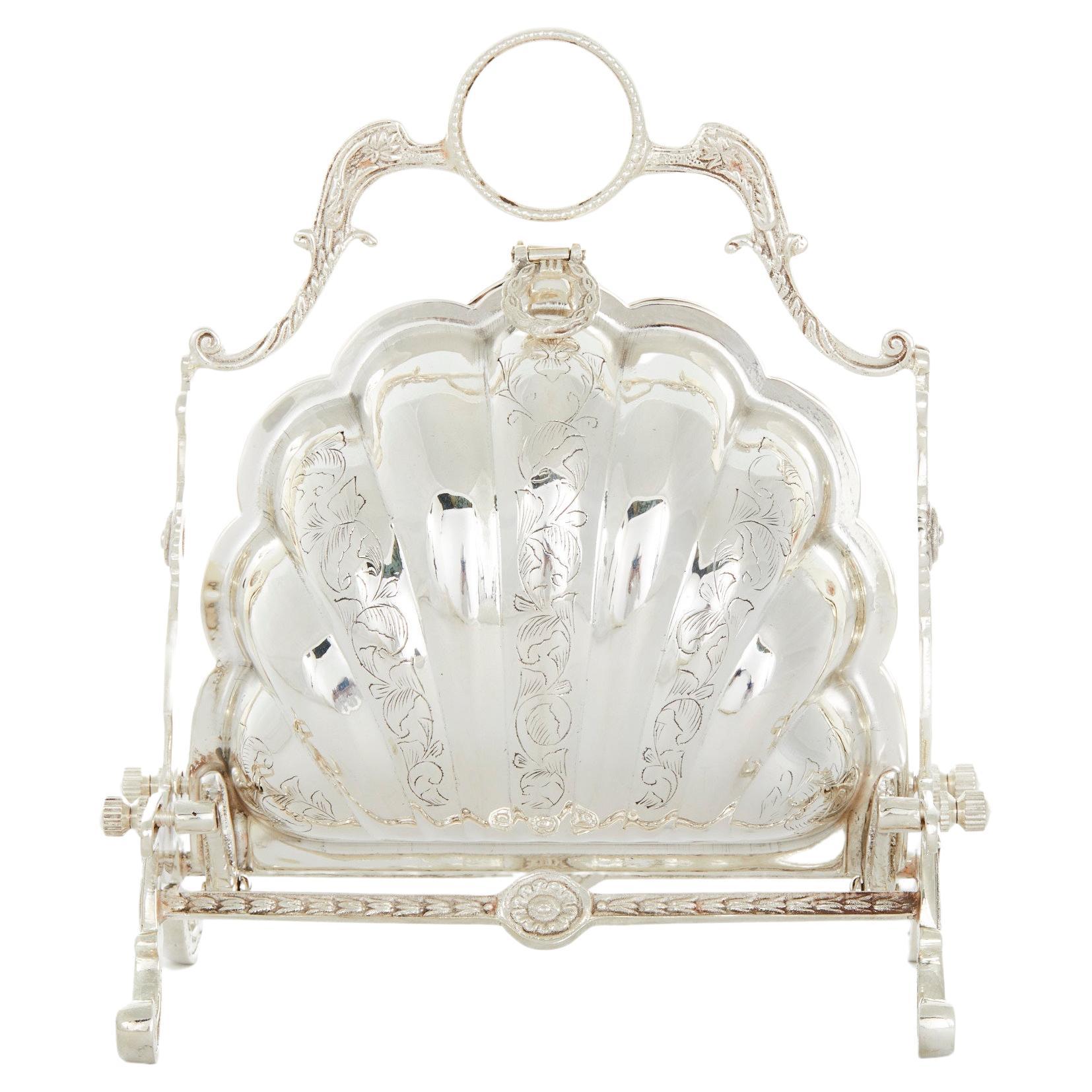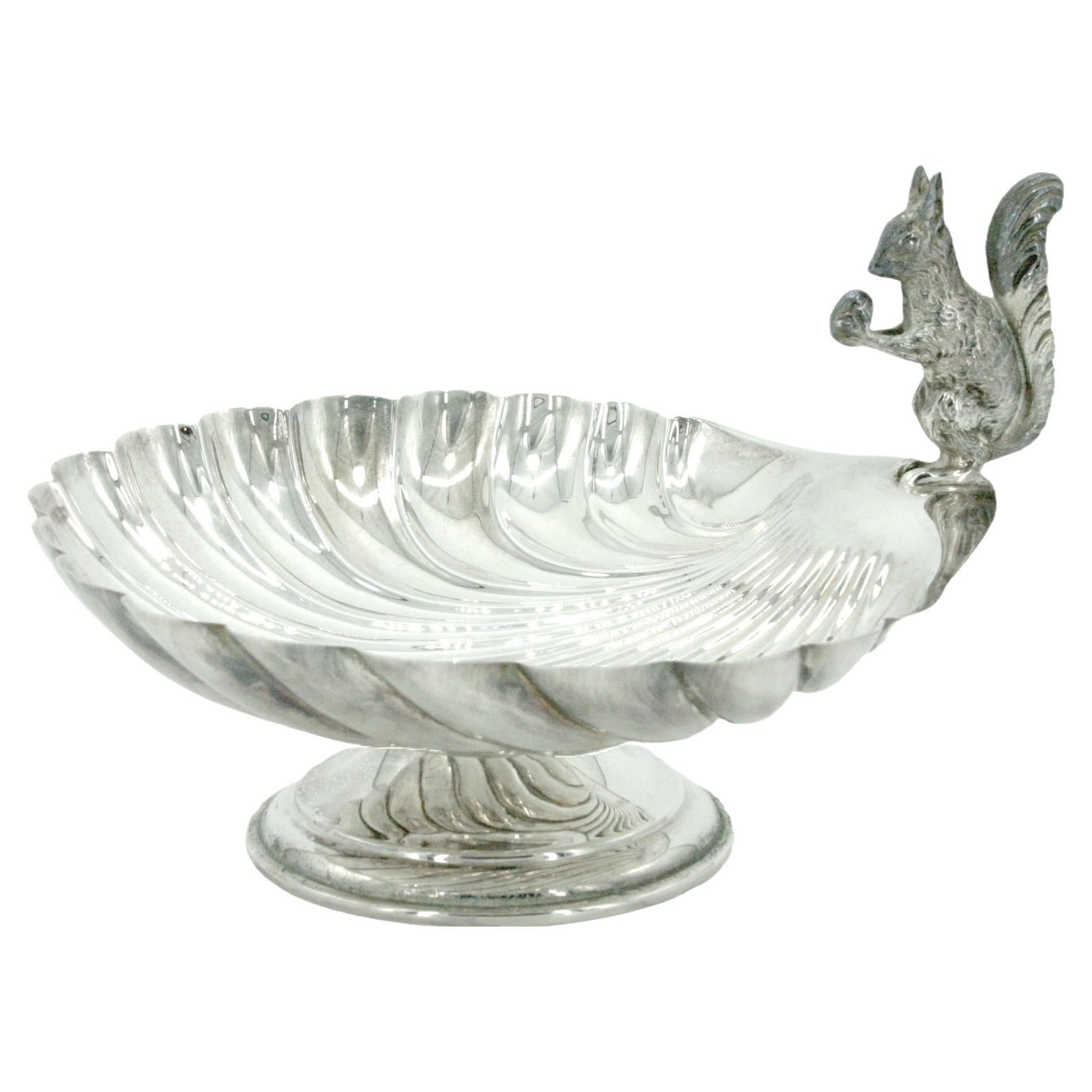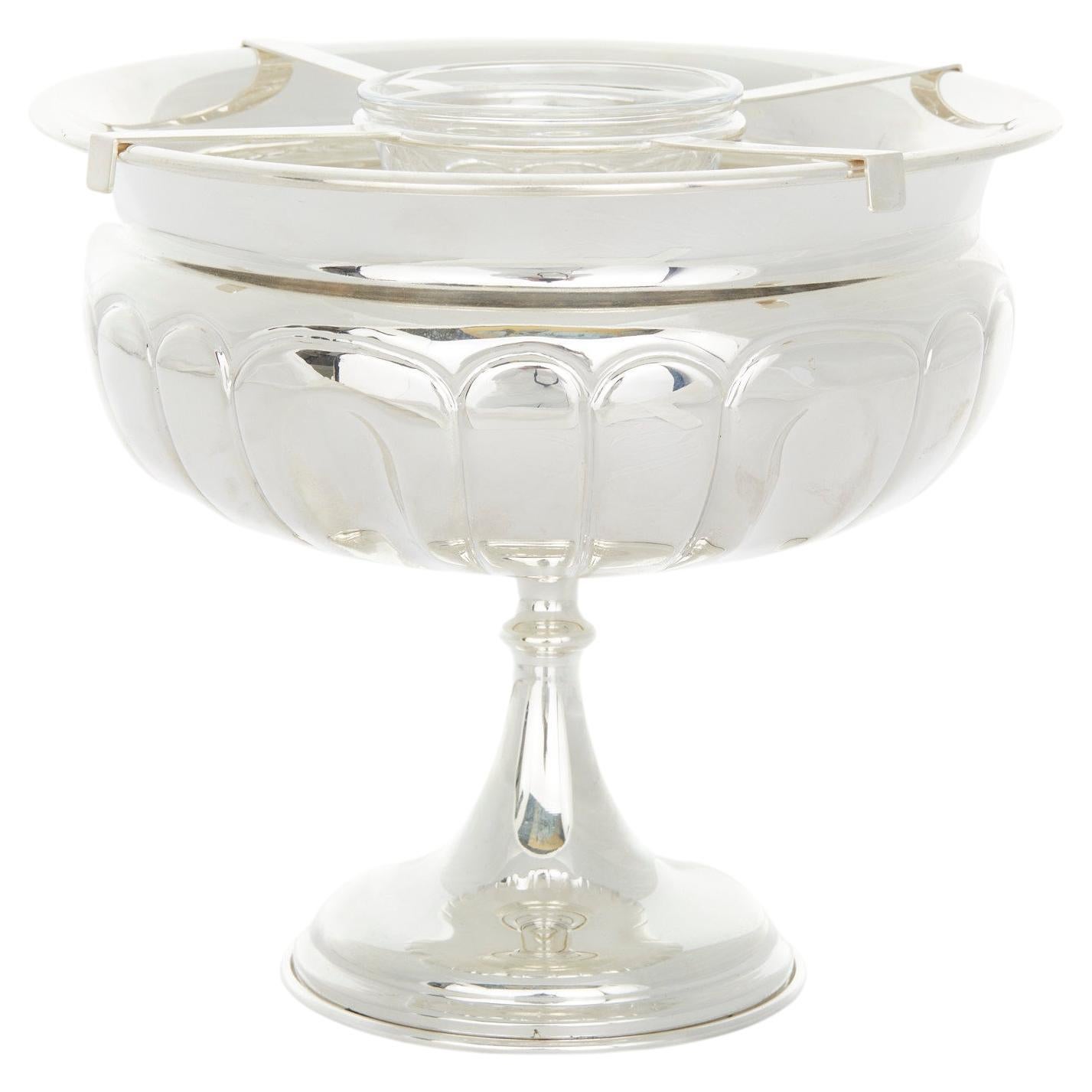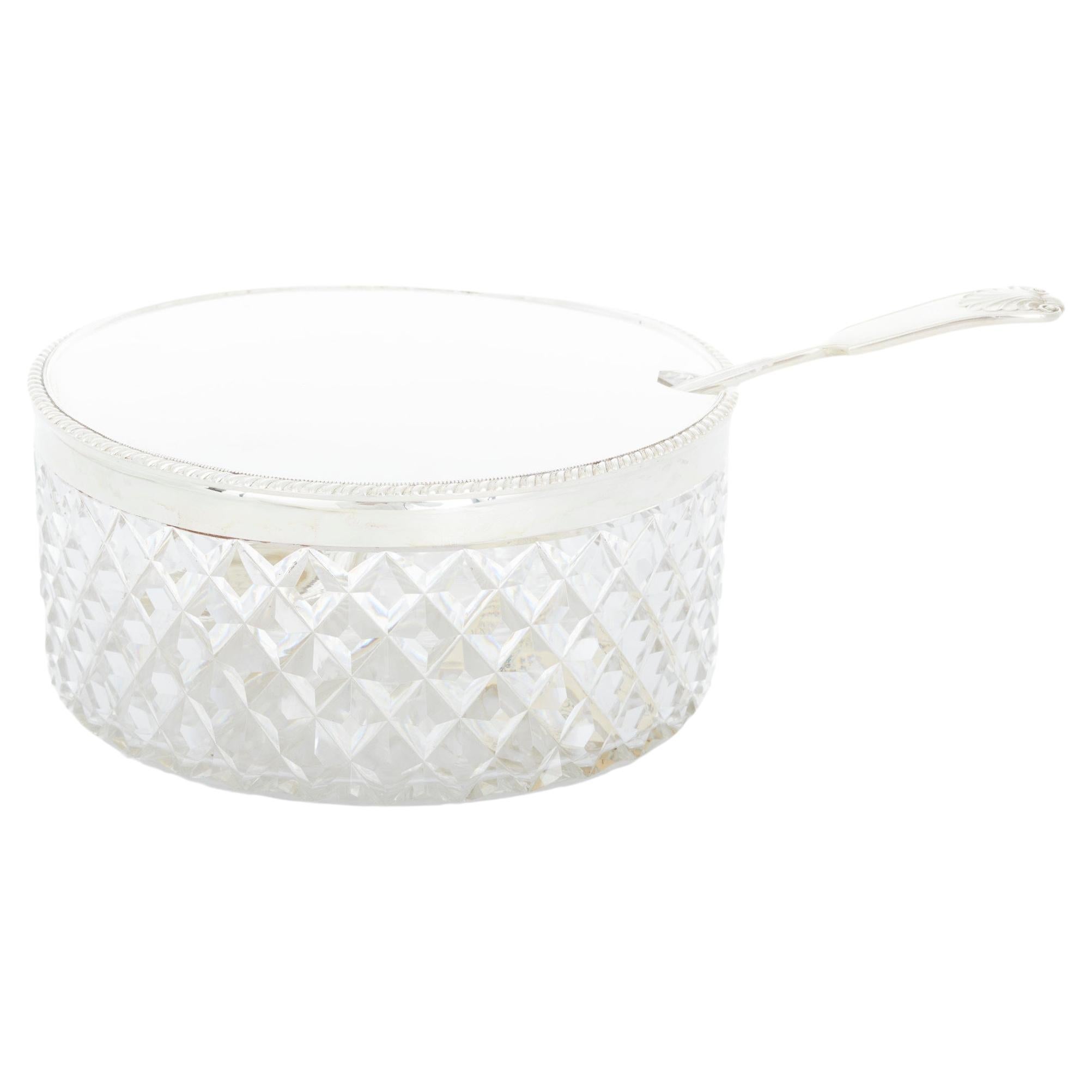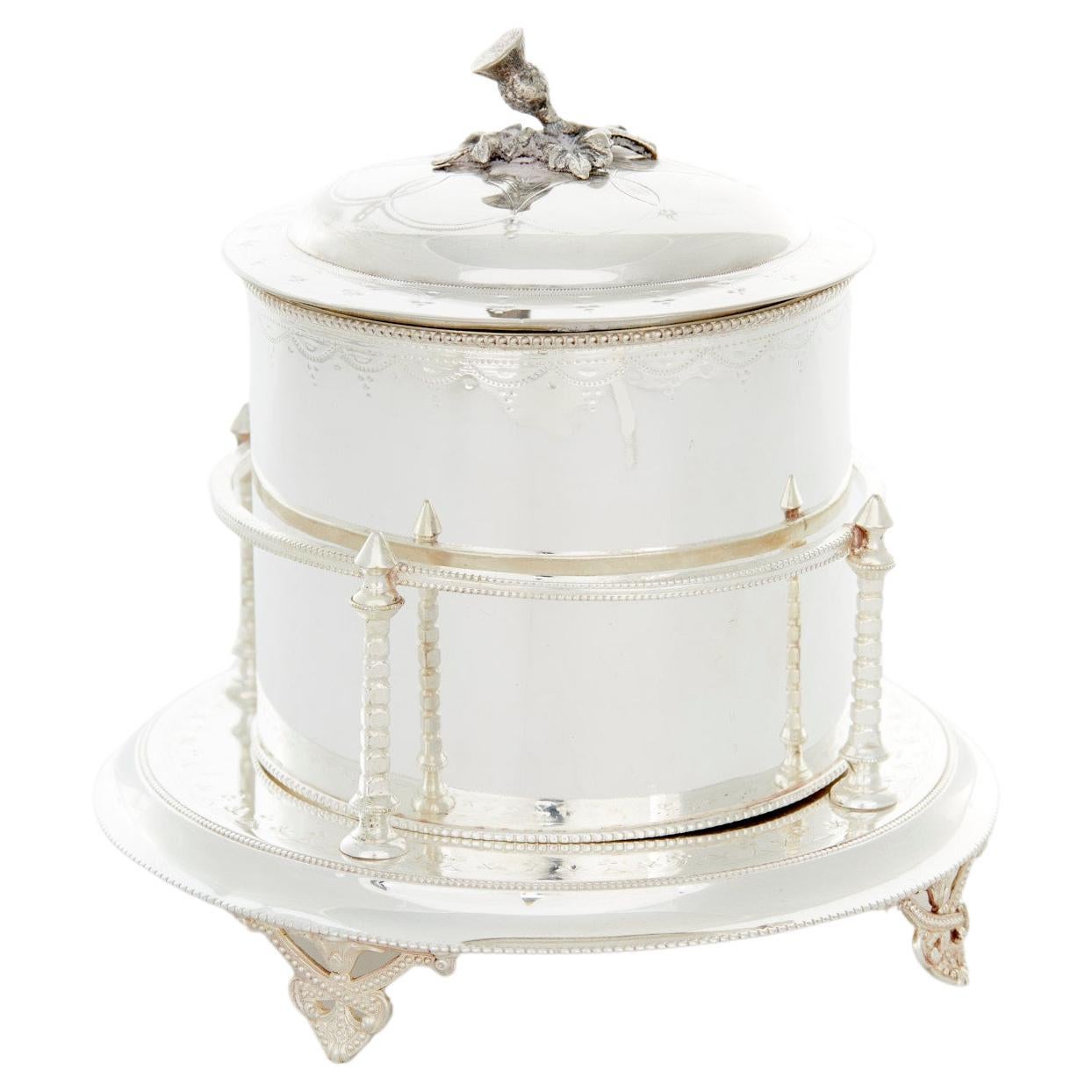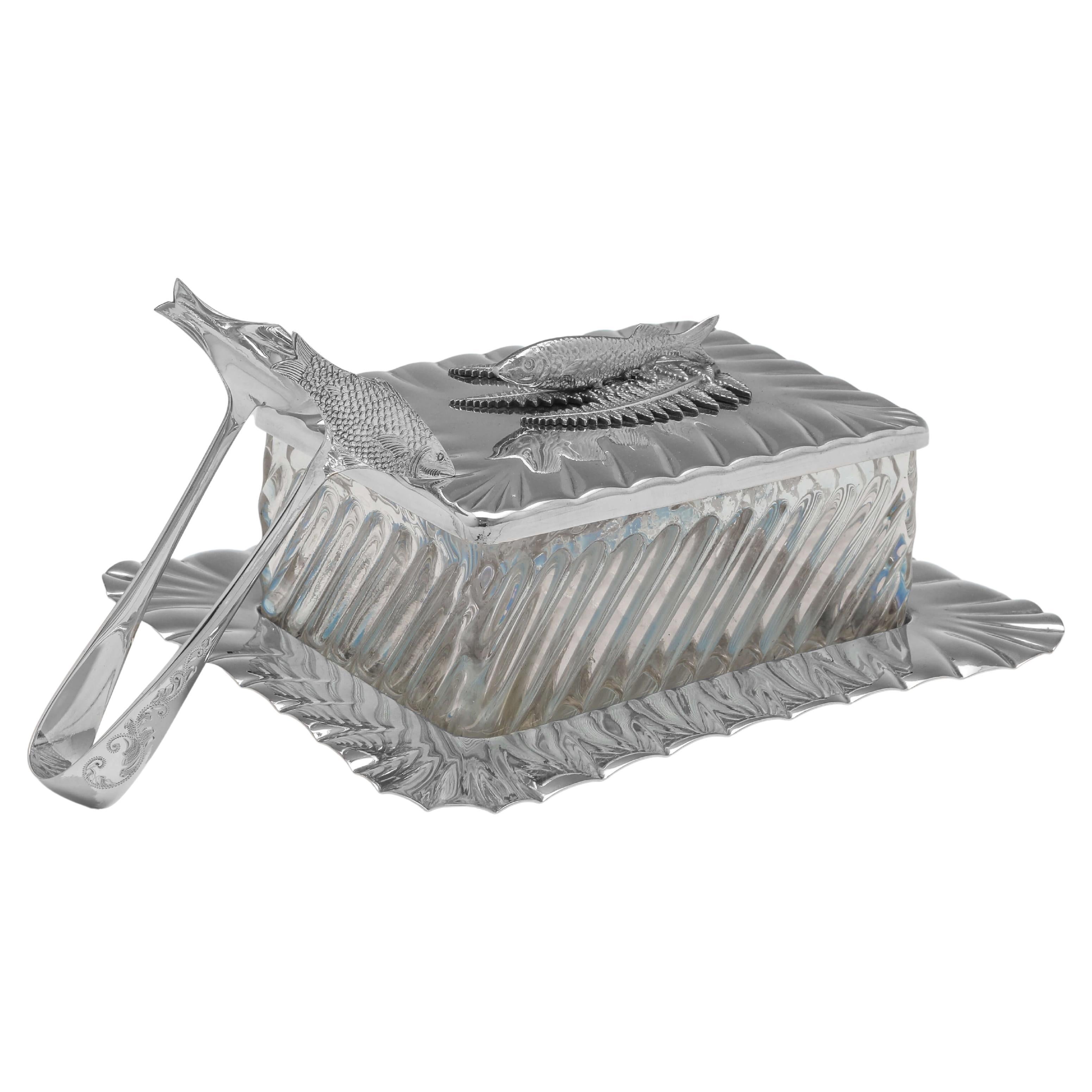Items Similar to Silver Plated Airplane-Themed Tableware, circa 1910
Want more images or videos?
Request additional images or videos from the seller
1 of 7
Silver Plated Airplane-Themed Tableware, circa 1910
About the Item
This is a beautiful silver-plated egg cup and spoon set with an airplane motif, dating to the early 1910s. The set includes four matching footed egg cups. The cups sit upon the stacked wings of a biplane. Four small egg spoons accompany the set. The set was made by James Dixon & Son, 14 St. Andrews Street, Holborn Circus, London.
The 19th century saw an increased fascination with aviation, thanks in part to hot air ballooning and the invention of Zeppelin dirigibles. But flight as we know it today, in fixed-wing airplanes, began in the early 20th century, as entrepreneurs and engineers including William E. Boeing, Donald Douglas Sr., James H. "Dutch" Kindelberger, and James S. McDonnell began to build on what the Wright Brothers had started not so long before. This hunger and fascination for all things aviation found its way to popular design, from advertisements to clothing designs to table settings.
Herbert Johnson discusses this phenomena in his book Wingless Eagle: U.S. Army Aviation through World War I: “…Even men’s haberdashery was impressed with an aeronautical stamp. The November 1910 Collier’s offered for sale two styles of Silver Band collars: one that was 2 1/8 inches high was named the Biplane; the taller collar, 2 3/8 inches high, was denominated the Monoplane… An Adler-Rochester Clothes ad featured a male model posed at the open door of an airplane factory, presumably discussing flying with another well-dressed aeronaut…The most ingenious use of aviation motif was probably the advertisement of the International Correspondence Schools, America’s largest mail-order educational institution. Their 1913 advertisement depicted a flying airplane to which was appended the slogan, “Nothing Is Impossible to Men with Ambition”.
CONDITION:
This silver-plated egg and spoon set is in very good condition, and comes in its full set with no missing pieces. Wear is consistent with age and gentle use. No significant areas of tarnish. Hallmarked along back tail wing.
Dimensions: 4 1/4" H x 7 1/2" W x 8 1/2" D.
- Dimensions:Height: 4.5 in (11.43 cm)Width: 7.5 in (19.05 cm)Depth: 8.5 in (21.59 cm)
- Style:Art Deco (Of the Period)
- Materials and Techniques:Silver,Plated
- Place of Origin:
- Period:1910-1919
- Date of Manufacture:1910
- Condition:Wear consistent with age and use.
- Seller Location:Colorado Springs, CO
- Reference Number:
About the Seller
4.9
Platinum Seller
These expertly vetted sellers are 1stDibs' most experienced sellers and are rated highest by our customers.
Established in 2010
1stDibs seller since 2011
400 sales on 1stDibs
Typical response time: <1 hour
- ShippingRetrieving quote...Ships From: Colorado Springs, CO
- Return PolicyA return for this item may be initiated within 10 days of delivery.
More From This SellerView All
- Hallmarked Silver Plated Keepsake Box, Sheffield, Uk, Circa 1900Located in Colorado Springs, COOffered is a stunning Sheffield silver keepsake box dating to 1900, with associated hallmark. This small box includes a clean interior and rounded corners. The box is free of names or initials, but would have been used to house keepsakes such as jewelry or cufflinks. A well maintained, elegant piece, this antique silver box is an excellent addition to any silver collection. Trinket or keepsake boxes have taken on many forms since their first conception in ancient times. However their purpose remains the same; to store jewelry and other items precious to the owner. Originally, these boxes were used specifically for jewelry. These were in common use as early as 5000 BC in Ancient Egypt, when the majority of Egyptians, both male and female, wore jewelry. Boxes were used to keep these gemstone encrusted items safe. In Ancient Rome, jewelry was a status symbol. Rings and brooches were utilized to represent ones status in society. Again, boxes were needed for security and storage purposes. Finding early examples of these are quite rare. Victorian and Edwardian examples of trinket boxes are far more common. This is because owning jewellery was a luxury until the Victorian era- let alone possessing so much a box was needed to store it all. Fine jewelry and other items became available to the masses after the industrial revolution due to the reduction in production costs. This led to a demand for trinket boxes, which were much smaller than jewelry boxes and therefore better suited to the needs of the middle class who did not yet possess an abundance of jewelry. In Victorian households, collectables and other items of interested were also stashed inside these boxes. This is why they are known as trinket or keepsake boxes, rather than just jewelry boxes, although of course jewelry was also stored in them. Trinket boxes were produced in large numbers around this time. Many were lined with colored plush or velvet or rich wood. More elaborate designs had interior divisions and trays for rings and other pieces of jewellery. It was also common to see trinket boxes so small that they could only contain one item, such as a single ring. Ornate exteriors were created to reflect the value of the trinket boxes contents. The Edwardian era saw the introduction of new styles of trinket box. These included small circular or oblong boxes...Category
Antique Early 1900s British Art Deco Decorative Boxes
MaterialsSilver
- Hallmarked Silver Plated Keepsake Box, Sheffield, UK, circa 1900Located in Colorado Springs, COOffered is a stunning silver plated keepsake box dating to 1900, with associated hallmark. This small box includes a wooden interior with two slots and a blank square on top where initials could have been engraved. A well maintained, elegant piece, this antique silver box is an excellent addition to any silver or home decor collection. Trinket or keepsake boxes have taken on many forms since their first conception in ancient times. However their purpose remains the same; to store jewelry and other items precious to the owner. Originally, these boxes were used specifically for jewelry. These were in common use as early as 5000 BC in Ancient Egypt, when the majority of Egyptians, both male and female, wore jewelry. Boxes were used to keep these gemstone encrusted items safe. In Ancient Rome, jewelry was a status symbol. Rings and brooches were utilized to represent ones status in society. Again, boxes were needed for security and storage purposes. Finding early examples of these are quite rare. Victorian and Edwardian examples of trinket boxes are far more common. This is because owning jewellery was a luxury until the Victorian era- let alone possessing so much a box was needed to store it all. Fine jewelry and other items became available to the masses after the industrial revolution due to the reduction in production costs. This led to a demand for trinket boxes, which were much smaller than jewelry boxes and therefore better suited to the needs of the middle class who did not yet possess an abundance of jewelry. In Victorian households, collectables and other items of interested were also stashed inside these boxes. This is why they are known as trinket or keepsake boxes, rather than just jewelry boxes, although of course jewelry was also stored in them. Trinket boxes were produced in large numbers around this time. Many were lined with colored plush or velvet or rich wood. More elaborate designs had interior divisions and trays for rings and other pieces of jewellery. It was also common to see trinket boxes so small that they could only contain one item, such as a single ring. Ornate exteriors were created to reflect the value of the trinket boxes contents. The Edwardian era saw the introduction of new styles of trinket box. These included small circular or oblong boxes...Category
Antique Early 1900s English Art Deco Decorative Boxes
MaterialsSilver
- Silver Plated Fishing Reel TrophyLocated in Colorado Springs, COThis silver trophy was designed to celebrate the winner of an angling competition. Three fishing rods with large reels intersect over one another, forming a three-pronged base for the trophy. Looped onto the rods is a wreath, signifying victory for the recipient of the trophy. The chalice of the trophy is clear and nondescript, free of any markings or initials. Well maintained and sturdy, this is an excellent example of antique silver craftsmanship. Sportfishing began in earnest in 15th century England...Category
Early 20th Century Art Deco Sheffield and Silverplate
MaterialsSilver
- Silver Sheffield Cricket Sugar Jar, circa 1900Located in Colorado Springs, COThis is an exquisite early 20th century crystal jar with a silver lid and spoon. The lid's top is fashioned after a cricket wicket. The jar sits on a round silver base with decorativ...Category
Antique Early 19th Century British Sheffield and Silverplate
MaterialsSilver
- "The Emigrants" Frederic Remington Chromolithograph, circa 1910By Frederic RemingtonLocated in Colorado Springs, COThis is a chromolithograph of "The Emigrants" by Frederic Remington. The print includes Remington's printed signature in the bottom right. The compositio...Category
Vintage 1910s American Prints
MaterialsPaper
- Silver Plated Keepsake Box, Early 20th CenturyLocated in Colorado Springs, COOffered is a silver plated keepsake box, dating to the early 1900s. The hallmarked box offers great storage solution for jewelry, cufflinks, and other keepsakes, with a divided inter...Category
Antique Early 1900s English Jewelry Boxes
MaterialsSilver
You May Also Like
- English Silver Plate Tableware PieceLocated in Tarry Town, NYEarly 20th Century English silver plate tableware serving toast rack / candy dish . The toast rack / candy dish features a gold wash interior and beautiful exterior floral design det...Category
20th Century English Sheffield and Silverplate
MaterialsGold, Silver Plate
- English Silver Plate Tableware Serving PieceBy Sheffield Silver Co.Located in Tarry Town, NYEnglish silver plate tableware/ barware serving piece with squirrel handle resting on a round base with interior swirl design details. The centerpiece is in great condition. Maker's ...Category
Vintage 1930s English Serving Pieces
MaterialsSilver Plate
- Silver Plate Tableware Footed Caviar ServiceLocated in Tarry Town, NYBeautiful Hand made Silver Plated three piece barware / tableware caviar service . The caviar piece features a round footed base with exterior design de...Category
20th Century Italian Sheffield and Silverplate
MaterialsSilver Plate
- 20th Century English Silver Plate / Cut Crystal TablewareLocated in Tarry Town, NYLate 20th century English silver plate framed top with cut crystal tableware covered serving dish with ladle. The serving dish is in great condition. Minor wear consistent with age /...Category
Late 20th Century English Arts and Crafts Serving Pieces
MaterialsCrystal, Silver Plate
- English Sheffield Plate Barware / Tableware PieceLocated in Tarry Town, NYOld English sheffield silver plate three piece barware / tableware with exterior design details & covered top finial. The barware / tableware piece is in good condition. Minor wear c...Category
Antique 1870s English Sheffield and Silverplate
MaterialsSilver Plate, Copper
- Edwardian Silver Plate Sardine Dish & Tongs - Henry Wilkinson c. 1910By Henry Wilkinson & Co.Located in London, LondonMade circa 1910 by Henry Wilkinson & Co., this very stylish, Edwardian, Antique Silver Plated Sardine Dish and Tongs, feature swirled fluting to the silve...Category
Vintage 1910s English Edwardian Sheffield and Silverplate
MaterialsSilver Plate
Recently Viewed
View AllMore Ways To Browse
Silver Men
Antique Silver Band
Antique Silver Setting
Antique International Silver
Silver Wings
Silver Band Men
Mens Silver Bands
Silver Table Setting
Silver Plated Spoons
Silver Plate Small Pieces
Clothes Set
Dress 1910
Back Plate Door
Antique Silver Sheffield Silver Hallmarks
Full Circa Dress
Antique Silver Plated Tableware
Antique Door Back Plates
Antique Silver Table Spoons
